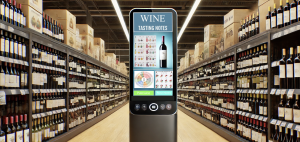By Anton Jovanovic (CEO) Neo Self Service Solutions
Consumers today need quick, accurate information to make informed purchasing decisions, especially when in-store. However, traditional search methods often fail to deliver, focusing more on ads and paid content than providing the precise answers shoppers need in real time. Not only does this leave consumers frustrated and without the help they expect when making important buying choices, it’s a missed opportunity for marketers.
Traditional Approaches are Falling Short
To address this gap, brands have previously, and continue to, invest heavily in apps looking to make a direct connection with consumers. However, the proliferation of brand apps has not resulted in better utility. With 5.7 million apps across Apple’s App Store and Google Play, and 39,000 new apps added monthly, the competition for user attention is fierce – and as we know most apps just don’t last.
While the average user has about 80 apps on their phone, they only use around 30 regularly . More than 90 percent of users usually giving up on a new app before the 30 day mark. The few apps that do get regular use typically involve essential services like social media, banking, and utilities. Many brand apps are deleted after a single use, with 25% abandoned right after download.
Give Consumer What They Need, When They Need It
In contrast to apps, self-service kiosks and onsite interactive screens offer consumers the real-time, in-store utility they need. Shoppers don’t want to deal with app downloads that promise a quick sugar hit but don’t provide any long-term utility. Kiosks step in by giving timely, accurate information exactly when it’s needed and profitable – at the point of purchase.
Imagine a customer in a big box liquor store, trying to choose the right wine for a dinner party. The wine aisles are vast and overwhelming, with hundreds of choices. Instead of relying on an app or conducting a web search to decipher which wine pairs best with their meal, a kiosk can provide wine recommendations, reviews, and food pairing suggestions based on their preferences. This instant assistance allows the shopper to confidently make a decision without confusion or delay, all within the store and guided by the store with options and offers to boot.
The Shift from Engagement to Utility
Consumers’ needs are driving retail away from engagement-first strategies like apps, toward utility first solutions such as kiosks. Shoppers don’t want constant engagement—they want problems solved efficiently. Kiosks deliver real-time, practical solutions, whether it’s helping customers find product information in electronics stores, compare features in home improvement, or explore items in supermarkets.
Take the retail wine example: A kiosk not only provides wine recommendations and food pairing ideas, but it can also go a step further by printing out tasting notes. These notes can help shoppers educate themselves on wine varieties, regions, and flavours—enhancing their overall shopping experience. The kiosk could also print out a recipe that pairs perfectly with the selected wine, offering real, actionable value. In addition, incentives and offers, such as discounts or loyalty rewards, could be printed or delivered via a QR code, making the kiosk an even more powerful tool for driving sales and engagement in the moment.
This ability to deliver useful, tangible outputs like printed notes or QR codes extends the utility of kiosks, making them more than just a digital tool—they become an integral part of the shopping experience, providing the immediate value that customers now expect from brands.
Providing genuine and useful utility at the right time leads to higher customer satisfaction, improved brand trust, and increased sales.
Conclusion: Kiosks Answer the App Fatigue Problem
Consumers are tired of downloading apps that don’t deliver. What they want is instant access to the right information while they’re in-store and ready to buy. Self-service kiosks provide this by giving customers the utility they need without the burden of an app download. For brands, this is the path forward: delivering real value, solving real problems, and building long-term trust.
Key Stats:
5.7 million apps available on the Apple App Store and Google Play
39,000 new apps uploaded each month
25% of apps are deleted after one use
71% of users remove an app within 90 days
References:
https://www.statista.com/statistics/276623/number-of-apps-available-in-leading-app-stores/
https://techreport.com/statistics/software-web/mobile-app-download-statistics/
https://www.nudgenow.com/blogs/mobile-app-retention-rate#top-statistics-of-mobile-app-retention-rate



